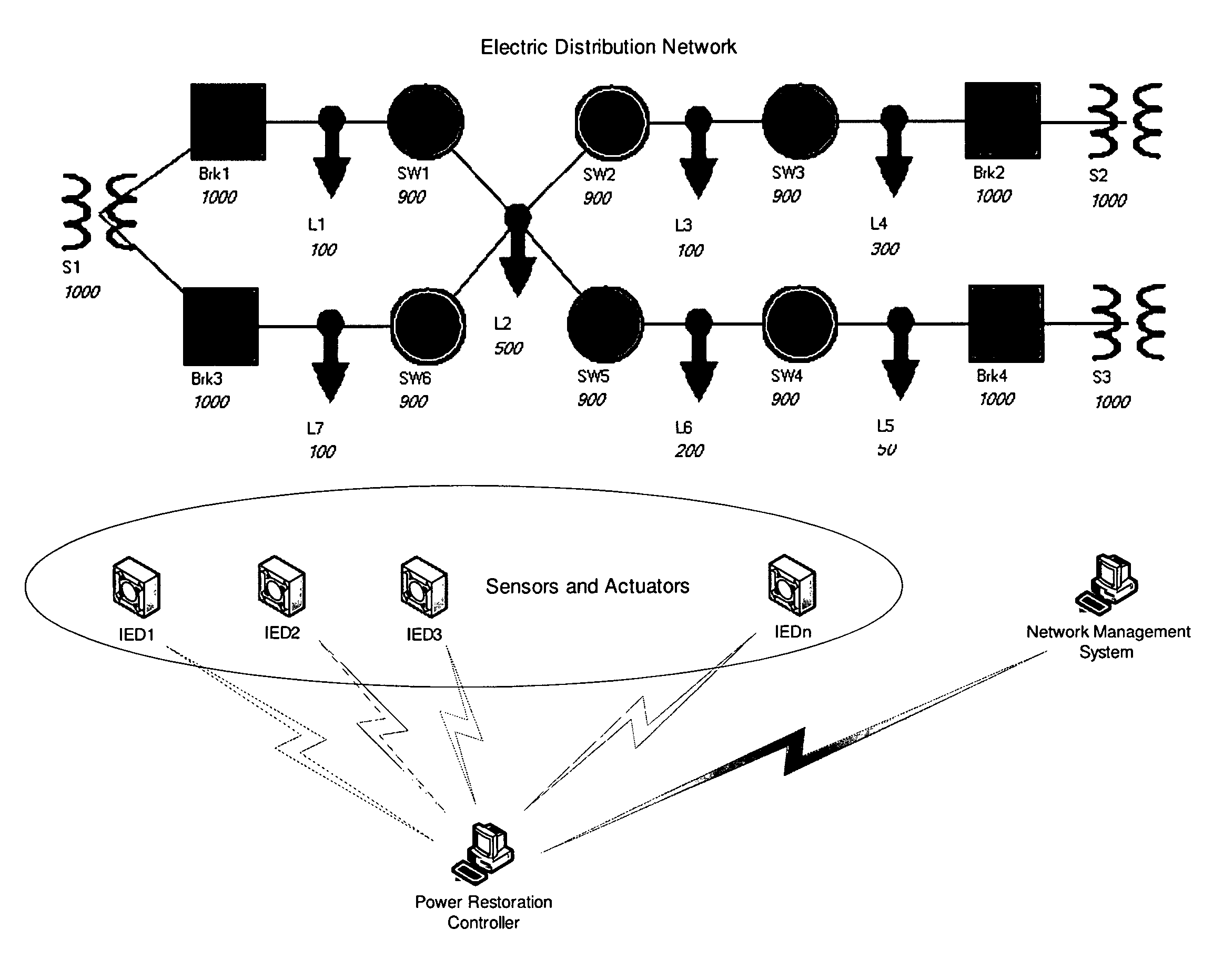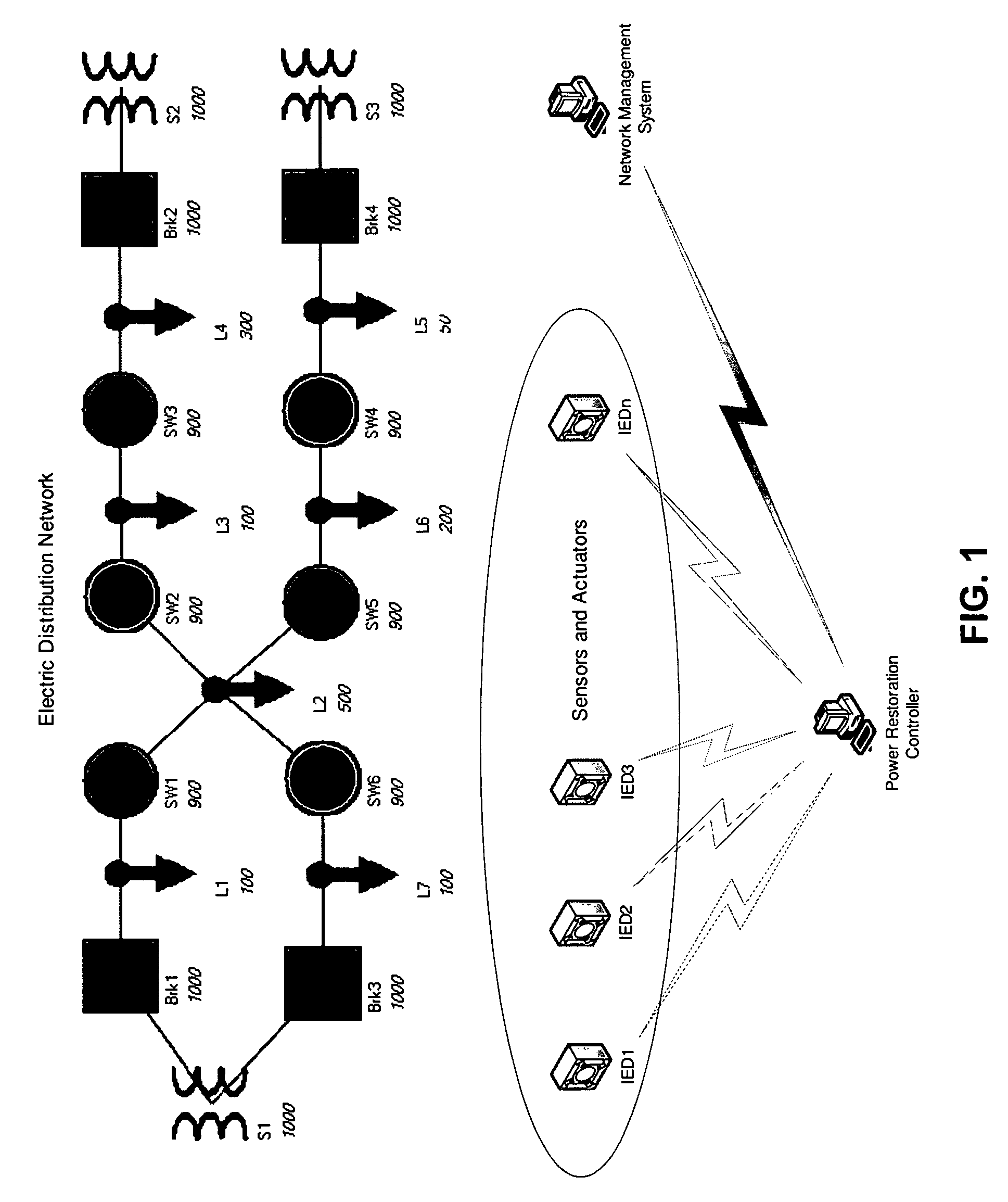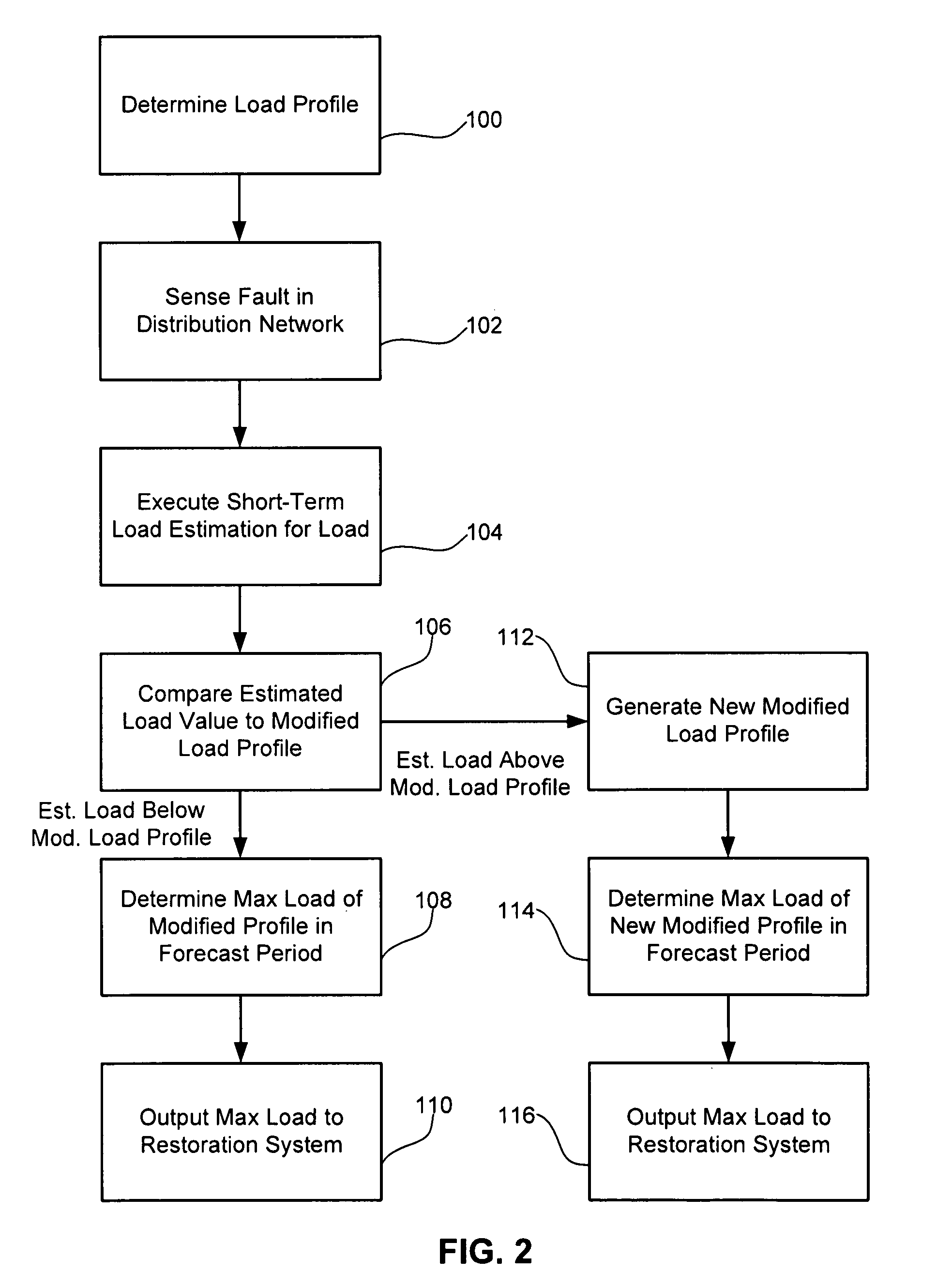Short-term load forecasting based capacity check for automated power restoration of electric distribution networks
a technology of automatic power restoration and short-term load forecasting, applied in the direction of load forecast in ac network, electric devices, instruments, etc., can solve the problems of power restoration switch and switching sequence determination, insufficient procedure, and possible overload of alternative sources
- Summary
- Abstract
- Description
- Claims
- Application Information
AI Technical Summary
Benefits of technology
Problems solved by technology
Method used
Image
Examples
Embodiment Construction
)
[0017]With reference now to FIG. 1, an exemplary electric distribution network is shown. The network includes three sources S1-S3, seven loads L1-L7 and various switching devices Brk1-Brk4 and SW1-SW6. Devices SW2, SW4 and SW6 are normally open (NO) tie switches. The tie switches make the network electrically radial, in other words, each load is supplied by only one source. It is important to ensure that the total load supplied by each source and the current flowing through each switching device is less than their respective maximum capacities. As shown in FIG. 1, source S1 serves loads L1, L2, L6 and L7, which total 900 A. This is less than the S1 maximum capacity of 1000 A. Similarly, sources S2 and S3 supply 400 and 50 A of load respectively, which is less than their respective capacities. Furthermore, the current flowing through each switching device is less than its respective maximum load carrying capacity (e.g. 1000 A for Brk1, 900 A for SW1). According to one embodiment, ma...
PUM
 Login to View More
Login to View More Abstract
Description
Claims
Application Information
 Login to View More
Login to View More - R&D
- Intellectual Property
- Life Sciences
- Materials
- Tech Scout
- Unparalleled Data Quality
- Higher Quality Content
- 60% Fewer Hallucinations
Browse by: Latest US Patents, China's latest patents, Technical Efficacy Thesaurus, Application Domain, Technology Topic, Popular Technical Reports.
© 2025 PatSnap. All rights reserved.Legal|Privacy policy|Modern Slavery Act Transparency Statement|Sitemap|About US| Contact US: help@patsnap.com



